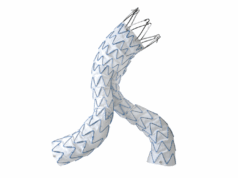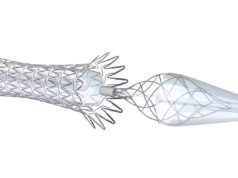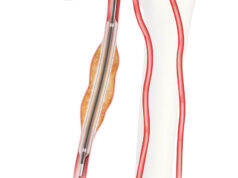 The one-year clinical outcomes from the MDT-2113 IN.PACT SFA Japan trial have been released. The data was recently presented by Osamu Iida, Kansai Rosai Hospital, Hyogo, Japan at the LINC 2017 conference (24–27 January, Leipzig, Germany), and reinforced the consistent clinical outcomes obtained using the IN.PACT drug-coated balloon.
The one-year clinical outcomes from the MDT-2113 IN.PACT SFA Japan trial have been released. The data was recently presented by Osamu Iida, Kansai Rosai Hospital, Hyogo, Japan at the LINC 2017 conference (24–27 January, Leipzig, Germany), and reinforced the consistent clinical outcomes obtained using the IN.PACT drug-coated balloon.
The IN.PACT SFA Japan trial enrolled 100 patients at 11 sites in Japan who were randomised to treatment with either the drug-coated balloon (n=68) or plain balloon angioplasty (percutaneous transluminal angioplasty) (n=32). Per protocol, primary patency rates were assessed at 12 months of follow-up and demonstrated: 89.2% for the drug-coated balloon group and 48.4% for the plain angioplasty group (p<0.001). Primary patency at 360 days was also calculated by Kaplan-Meier survival estimates; at this specific time point, it was 93.9% for the drug-coated balloon group and 49.9% for the angioplasty group (p<0.001). Primary patency means a restoration of adequate blood flow through the treated segment of the diseased artery. Clinically-driven target lesion revascularisation was 2.9% for the drug-coated balloon group, compared to 18.8% in the plain angioplasty group (p=0.012).
The data also showed lower major adverse events for the drug-coated balloon at one year (4.4% compared to 18.8% in the plain angioplasty group; p=0.028), with no major target limb amputations.
“This study builds on the previous Medtronic drug-coated balloon clinical studies, reinforcing the consistent clinical performance in terms of primary patency and re-intervention rates of this device across patient populations,” said Iida. “We are pleased to see such substantive drug-coated balloon clinical data from a patient cohort in Japan.”
These results are consistent with prior findings from the pivotal IN.PACT SFA trial one-year outcomes, and further reinforce the real-world results from the full clinical cohort of the IN.PACT Global Study.
“The MDT-2113 IN.PACT SFA Japan trial represents our global commitment to deliver robust clinical evidence to aid in the choice of treatment options for patients with peripheral artery disease,” said Mark Pacyna, vice president and general manager of the Peripheral business, which is part of the Cardiac and Vascular Group at Medtronic. “We are pleased to be the first to present data comparing a drug-coated balloon to angioplasty in Japan.”
The Medtronic drug-coated balloon is an investigational device in Japan and not available for sale.













